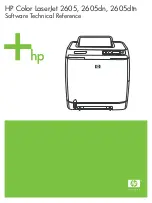
The XML document object
675
XML DOM node structure
The following table lists the contents of an XML DOM node structure:
Note:
The
cfdump
tag does not display XmlNode structures. If you try to dump an XmlNode structure,
the
cfdump
tag displays “Empty Structure”.
The following table lists the contents of the XmlName and XmlValue fields for each node type
that is valid in the XmlType entry. The node types correspond to the objects types in the XML
DOM hierarchy.
Note:
Although XML attributes are nodes on the DOM tree, ColdFusion does not expose them as
XML DOM node data structures. To view an element’s attributes, use the element structure’s
XMLAttributes structure.
The XML document object and all its elements are exposed as DOM node structures. For
example, you can use the following variable names to reference nodes in the DOM tree created
from the XML example in
“A simple XML document” on page 671
:
mydoc.XmlName
mydoc.XmlValue
mydoc.XmlRoot.XmlName
mydoc.employee.XmlType
mydoc.employee.XmlNodes[1].XmlType
Entry name
Type
Description
XmlName
String
The node name. For nodes such as Element or Attribute, the node
name is the element or attribute name.
XmlType
String
The node XML DOM type, such as Element or Text.
XmlValue
String
The node value. This entry is used only for Attribute, CDATA,
Comment, and Text type nodes.
Node type
XmlName
xmlValue
CDATA #cdata-section
Content of the CDATA section
COMMENT #comment
Content of the comment
ELEMENT
Tag name
Empty string
ENTITYREF
Name of entity referenced
Empty string
PI
(processing
instruction)
Target entire content excluding the
target
Empty string
TEXT
#text
Content of the text node
ENTITY
Entity name
Empty string
NOTATION
Notation name
Empty string
DOCUMENT #document
Empty string
FRAGMENT #document-fragment
Empty string
DOCTYPE
Document type name
Empty string
Summary of Contents for COLDFUSION MX 61-DEVELOPING COLDFUSION MX
Page 1: ...Developing ColdFusion MX Applications...
Page 22: ...22 Contents...
Page 38: ......
Page 52: ...52 Chapter 2 Elements of CFML...
Page 162: ......
Page 218: ...218 Chapter 10 Writing and Calling User Defined Functions...
Page 250: ...250 Chapter 11 Building and Using ColdFusion Components...
Page 264: ...264 Chapter 12 Building Custom CFXAPI Tags...
Page 266: ......
Page 314: ...314 Chapter 14 Handling Errors...
Page 344: ...344 Chapter 15 Using Persistent Data and Locking...
Page 349: ...About user security 349...
Page 357: ...Security scenarios 357...
Page 370: ...370 Chapter 16 Securing Applications...
Page 388: ...388 Chapter 17 Developing Globalized Applications...
Page 408: ...408 Chapter 18 Debugging and Troubleshooting Applications...
Page 410: ......
Page 426: ...426 Chapter 19 Introduction to Databases and SQL...
Page 476: ...476 Chapter 22 Using Query of Queries...
Page 534: ...534 Chapter 24 Building a Search Interface...
Page 556: ...556 Chapter 25 Using Verity Search Expressions...
Page 558: ......
Page 582: ...582 Chapter 26 Retrieving and Formatting Data...
Page 668: ......
Page 734: ...734 Chapter 32 Using Web Services...
Page 760: ...760 Chapter 33 Integrating J2EE and Java Elements in CFML Applications...
Page 786: ...786 Chapter 34 Integrating COM and CORBA Objects in CFML Applications...
Page 788: ......
















































